
It has only three push buttons, a volume control and a headphone output jack. The display isn't lighted and there's no meter or tone control although many have added their own external S meters. One important control has been moved to the back of the HF-150 is the 20 dB attenuator. Since the new set doesn't have any RF bandpass filters like its older sibling, it can be overloaded by strong SW and MW signals. A good preselector such as the matching Lowe PR-150 would help in this respect. The synchronous detector is extremely easy to use, and it works extremely well. The tuning knob allows digital tuning that is so smooth and easy to use.
 If you are interested in a small receiver with great performance this may be a good choice for you. The unit supports sync. AM but does not have FM band, only MW through to 30MHz. It supports CW/SSB and AM mode reception.The only main problem as mentioned earlier with the HF-150 is that it was designed with the lack of proper bandpass filters in the antenna input front end circuitry of the receiver. The first mixer circuitry is prone to pick up all sorts of different signals in the receiving range of the receiver from 5 kHz to 30 MHz and can result in overloading problems when the receiver is used near strong local MW stations or with large outdoor antennas. A MW BCB rejection filter placed at the antenna input will help. This front-end overloading can show up as increased noise, local signals mixing with shortwave signals and as “ghost” signals. If the HF-150 is connected up to the matching PR-150, this will relieve the problems mentioned.
If you are interested in a small receiver with great performance this may be a good choice for you. The unit supports sync. AM but does not have FM band, only MW through to 30MHz. It supports CW/SSB and AM mode reception.The only main problem as mentioned earlier with the HF-150 is that it was designed with the lack of proper bandpass filters in the antenna input front end circuitry of the receiver. The first mixer circuitry is prone to pick up all sorts of different signals in the receiving range of the receiver from 5 kHz to 30 MHz and can result in overloading problems when the receiver is used near strong local MW stations or with large outdoor antennas. A MW BCB rejection filter placed at the antenna input will help. This front-end overloading can show up as increased noise, local signals mixing with shortwave signals and as “ghost” signals. If the HF-150 is connected up to the matching PR-150, this will relieve the problems mentioned. The LCD Display is not back lit, although later models such as the HF-150 Europa apparently have back lighting. Many users have added their own back lighting to the set.

There are also two battery compartments that hold four AA cells each. The HF-150's built-in NiCad battery charger performs perfectly. It is designed for continuous battery charging, when your not listening to the radio. The charger was designed properly, so the so called NiCad memory effect does not occur. All in all this is a very nice compact receiver with very good performance.

Principle: Superhet, double/triple conversion; IF-Freq. 45000/455 kHz
Wave bands : Wave Bands given in the notes.
Power type and voltage: Dry Batteries / 8 × 1,5 Volt
Loudspeaker/pwr.out: Permanent Magnet Dynamic (PDyn) Loudspeaker (moving coil) / 1.6 W / Ø 7.5 cm = 3 inch
Material: Aluminium Metal case
Shape: Table top model
Dimensions (WHD): 185 x 175 x 80 mm / 7.3 x 6.9 x 3.1 inch
Frequency range: 30 or 150 kHz to 30 MHz (depending on region); Modes: AM, Sync, LSB and USB; 60 memories; external power supply (12 VDC) possible. Optional Plug-in numeric keypad for direct frequency entry. Optional remote control system.
Adding a IR Remote Control to the HF-150:
The optional keypad is difficult to be found these days, so I did the next best thing and added an IR remote control system to my HF-150 would does the same thing basically and allows added flexibility of wireless control of the receiver. These remote controls are available from SWL Remotes: http://www.swl-remotes.com/features/lowehf150.html


 KPAD-1 Clone Keyboard:
KPAD-1 Clone Keyboard:For those who want a Keypad, there is a KPAD-1 clone available from: Wirechief A picture of the Keypad borrowed from Wirechief, I have not used this keypad so will refrain from any comment.

Excerpts from Original Lowe Brochure showing specifications and parameters:


Some Lowe HF-150 Web pages:
Palette House: Radio (Japan)
Mds975 (United Kingdom)
Kanuchin.com (Japan)
Boesch (Germany)
Fenu Radio
RF Systems AA-150 Active Antenna for HF-150
HF-150 Block Diagram:

The Radio Netherlands HF-150 Review:
Below is the extract of the original Radio Netherlands review on the HF-150:
| Radio Netherlands Review of the Lowe HF-150 |
Power: Mains, battery operation optional
Size: 185 x 80 x 175 mm
Weight: 1.3 kg (1.5 kg with batteries)
Coverage: AM (synchronous modes too: ASD, ASF, ASL, ASU), USB, LSB, 0.03-30 MHz
Value Rating 5/5
Introduction
Holland and Britain seem to be the main marketplace for Lowe receivers so far. This English company started making radios to its own design and specification a couple of years back, with the launch of the HF-125 and HF-225 receivers. The approach has been to try and make a simple to operate radio with the best specifications for the price. Compared to Japanese competition the radios look quite plain, but performance wise they score well. At the end of 1991 Lowe announced it was launching a small receiver for the bottom end of the market as an alternative to Japanese push button portables... sets like the Sony ICF2001D. In March 1992 we tested an off-the-shelf example of the HF-150, putting it through a series of laboratory and practical listening tests. In June 1995 we re-tested an off-the shelf sample. The results were similar to the test in 1992.
For a price of £419 in Britain (including VAT), you get a table-top communications receiver which at first glance looks surprisingly small. The case is made of metal, not plastic, and measures just 185 by 80 by 175 millimetres. It's quite light too, just 1300 grams without the 8 penlight batteries which fit into two special holders at the back of the set.
Simple Controls
From the front there are just 5 controls... a combined on-off switch and volume control, three buttons which have several functions including the selection of the mode and memories, and a large tuning knob. A large 5 digit liquid crystal display shows the frequency you're tuned to within the nearest kilohertz, If you push a button the display gives you information about the receiver mode and memory number, but normally it shows only the frequency, and there's no light to illuminate it. That's it. Lowe sell a keypad as an optional extra that plugs into the back of the set and you place in front of the radio as you use it. That's essential if you want to move quickly about the dial... otherwise you have to move up and down in frequency by spinning the tuning knob. Getting from 30 kHz right up to 30 MHz, which represents the full coverage of the set, could take some time.
The set has no signal strength meter, you can't add extra filters at a later stage for very narrow bandwidth reception of Morse code, there's no notch filter, no noise blanker, and no tone control. But if these are extras that you can miss, then what Lowe have put inside the box turns out to be very acceptable indeed.
Performance
The dual-conversion super heterodyne design is quite straight forward. Signals come in from an external antenna. You can switch in an antenna amplifier if you're using an indoor whip, although in practice we didn't need that at all in this part of Europe where signals are always strong. Signals go through a 30 MHz low pass filter before they hit the mixing stage of the radio. Of course there's a lot of energy coming off most shortwave antennas, bearing in mind the powers used by broadcast stations.
More expensive radios use a series of filters to make sure that if you're listening to 15 MHz short-wave for instance, strong medium wave signals, or stations in the 41 and 49 metre band are attenuated before they get to the mixing stage of the radio. Too much energy at the front end of the sensitive input circuitry can lead to overloading, and the appearance of signals on the dial which are the result of mixing products inside the radio. Having said that we measured the intercept point as +3 dBm using two signals 30 kHz apart. This gives you a dynamic range of 86 dB which is a fair-to-good value for a radio of this price. We disagree with the instruction book though, that recommends a long wire of up to 30 metres. Our tests in Holland showed that if you connect a wire longer than about 12 metres, you get enormous overloading problems once the sun sets. That will be less of a problem in low signal strength areas such as the Pacific or the American mid-west.
Attenuation Tricks
It's often assumed that the more signal you pump into a radio, the more distant stations you'll be able to hear. Well that's not the case. We found that late at night, weak and difficult signals were more intelligible if you switch in the 20 dB of attenuation. But that control is on the back of the set which is not easy to get at. If you use the set in Europe you might want to consider a separate aerial attenuator which say steps of 6, 12, 20 dB of attenuation, and give it try on weak signals.
Sensitivity and modes
We measured sensitivity using a signal modulated at 60% using a 1 kHz tone. We found that our measurements corresponded well with the results given by Lowe in their instruction book. Between 50 and 500 kHz the sensitivity is around 1.8 micro volts, and around 0.8 micro volts for the medium and short- wave part of the dial. There's much difference in sensitivity between the wide and narrow filters used in the HF-150.
The radio has various modes. USB, LSB, standard AM, and you can also use what's termed synchronous AM. Unlike other Lowe sets available until now, the HF-150 allows you to listen to either the upper or lower sideband of a broadcast signal whilst in the "sync" mode. That's extremely useful when there's a strong interfering station 5 kHz away from the station you're trying to listen to. You can also use synchronous detection to reduce at least some of the effects of short-wave fading. The use of synchronous detection though in the double-sideband mode leads to some slight loss of sensitivity, but that's nothing to be concerned about. The background noise also rises slightly on the example we've tested. The radio takes up to two seconds to lock onto the desired signal, but once it's locked the radio does an excellent job of keeping in lock even when the signal fades to almost nothing.
Battery drain high
Battery consumption of the receiver is quite high, especially when compared to similar priced competition, anything up to 275 mA at full volume. We put in a set of 8 fresh alkaline batteries and got the radio to work for just 6 hours before they were flat. You can purchase rechargeable nickel cadmium batteries. When the set is switched off they automatically charge up. It takes about 16 hours to get a full charge after which you can use the radio for portable work for about 3 hours before you need to recharge again. The cheapest solution of all is simply to use the supplied external AC adapter which plugs into the back of the radio and gives all the power you need without any hum problems.
The HF-150 has two filters that have a bandwidth of 7 and 2.9 kHz respectively. These ceramic filters have a good shape factor for the price paid. So if the signal you want to listen to is strong you can really sit back and listen to the programming. The design of the automatic gain control is excellent, so no unwanted pumping of signals. The signal distortion is very low for a radio of this time, and if you connect the radio to a hi-fi set you'd be surprised what fidelity you can get out of a strong short-wave broadcaster.
Accessories
Lowe offers accessories for the HF-150: a plug-in numeric keypad; an accessory kit consisting of a whip antenna, rechargeable batteries (described above), a carrying handle and a shoulder strap. Additionally there is an excellent (though costly) preselector, a speaker with audio processing controls, and a computer interface. The computer control commands are ASCII text strings, making programming easy. There are a number of software programs available in the third party market.
Tom Sundstrom found an easy solution to those wanting to use the keypad and the computer interface, or a tape recorder and a digital signal decoder, simultaneously. The Radio Shack (Tandy elsewhere on the globe) stores sell a molded audio plug adapter that takes two mono 1/8" plugs in and outputs to a 1/8" mono plug that fits very nicely into the HF-150 rear apron jacks. It's the 274-310 (US$2.49 in the 1998 catalog, page 122).
Summary
In short, the Lowe HF-150 is an excellent choice as an entry-level communications receiver. It gives much better performance than sets like the Kenwood R-1000 which were on the market 20 years ago for the same price, showing that it is still possible to improve on performance and keep the costs reasonable.
The HF-150E
A "Europa" version of the HF-150 started shipping in late 1997. Check Lowe's Web site for details. We have not yet tested this new model.







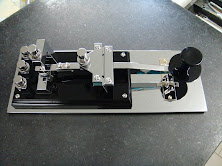
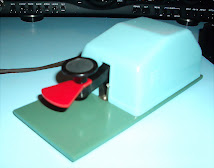




















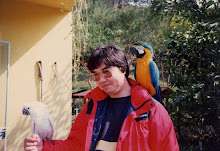






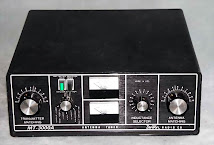
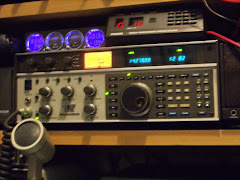
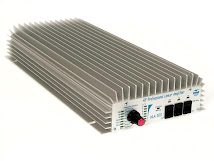
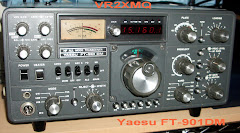













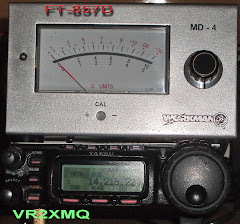





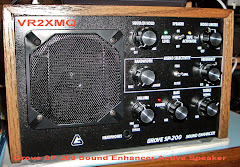



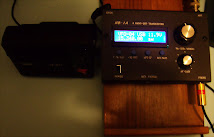



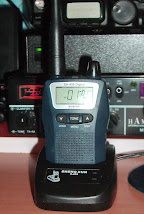
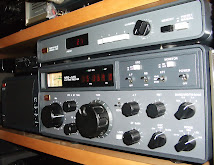





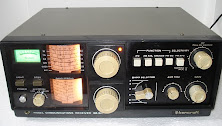












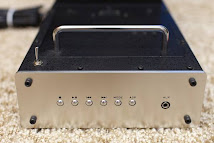

























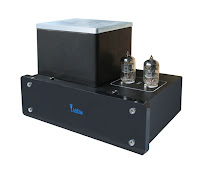

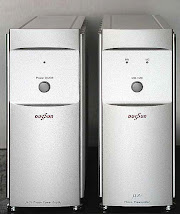



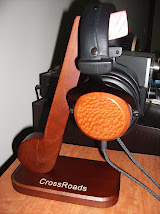






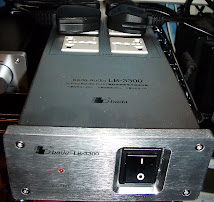
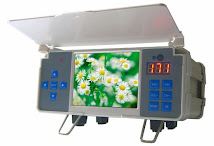































3 comments:
Whoo Hoo! New post! I was wondering. some great Best Headphones on here I had never heard. Thanks!!
Whoo Hoo! New post! I was wondering. some great Best Headphones on here I had never heard. Thanks!!
I haven't experienced the dreaded overload as a result of it having no bandpass filters. In fact, I think its a plus that it doesn't have bandpass filters - it makes for better, more even sensitivity across the entire range. I therefore enjoy stellar reception from LF to 28 MHz or so, with just a short wire antenna. What more can one ask for? This little radio gets an A++ from me.
Post a Comment